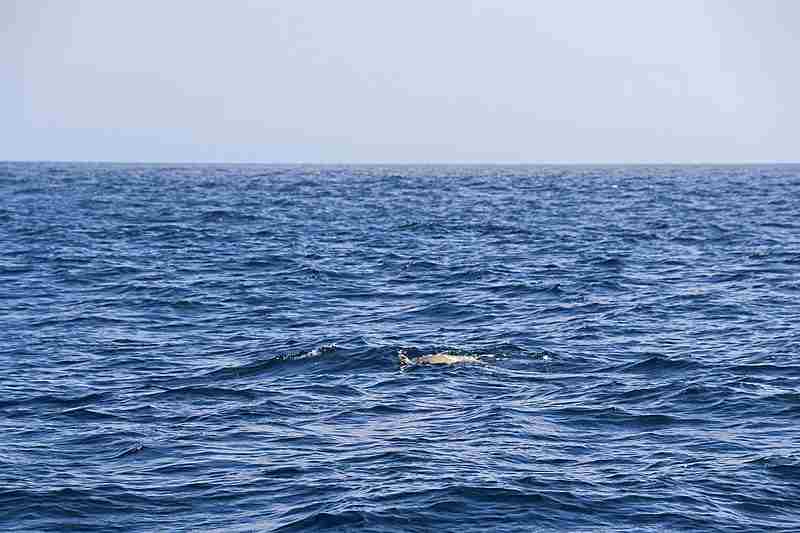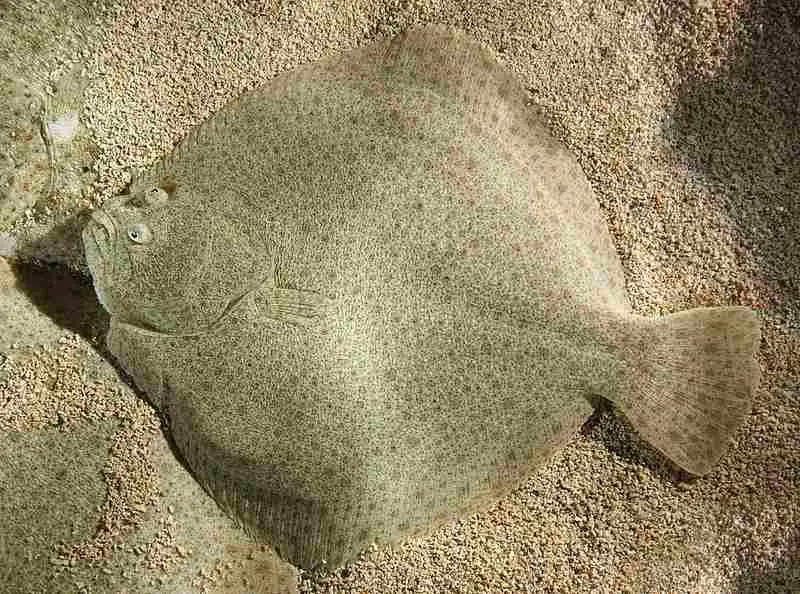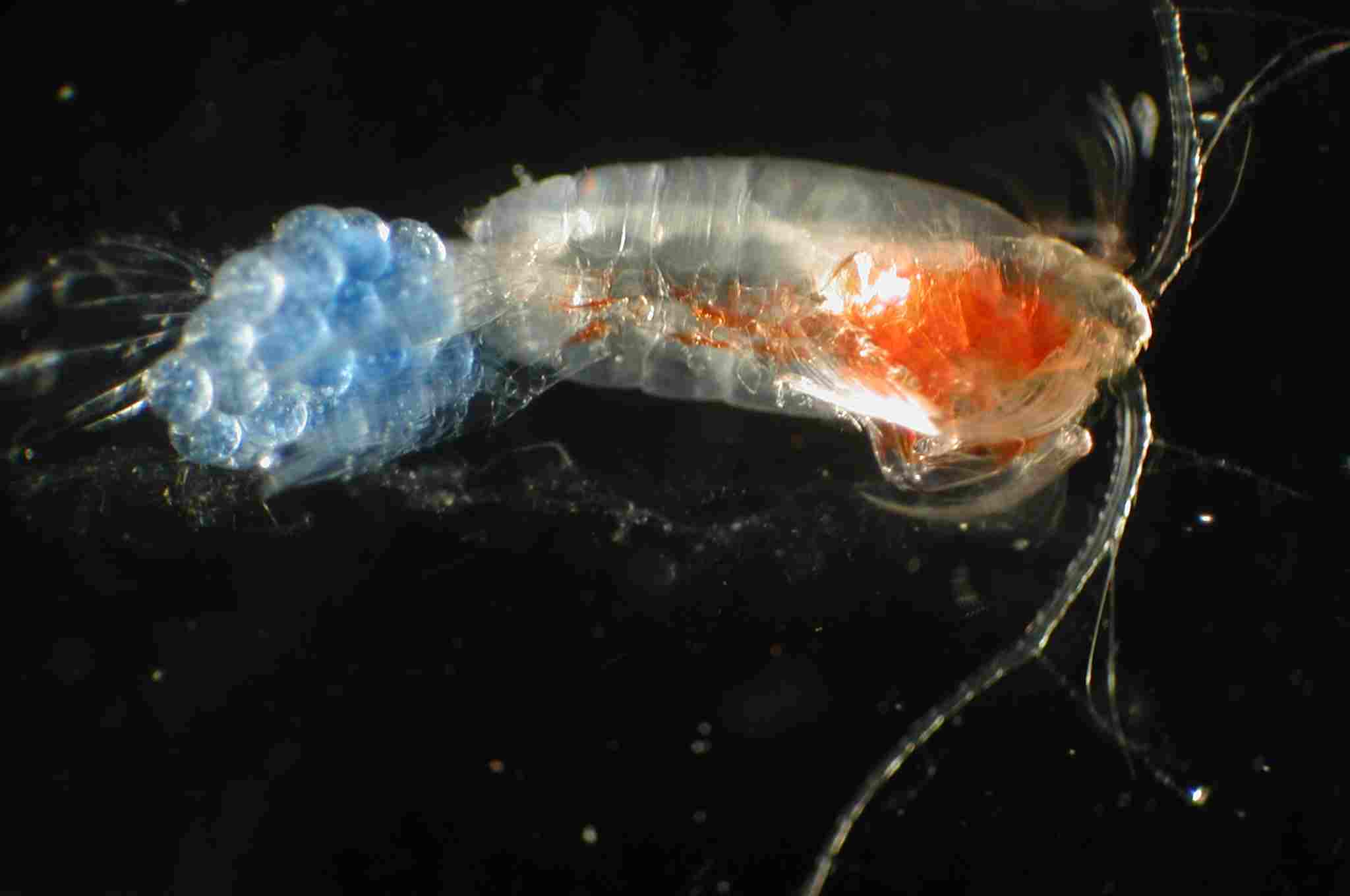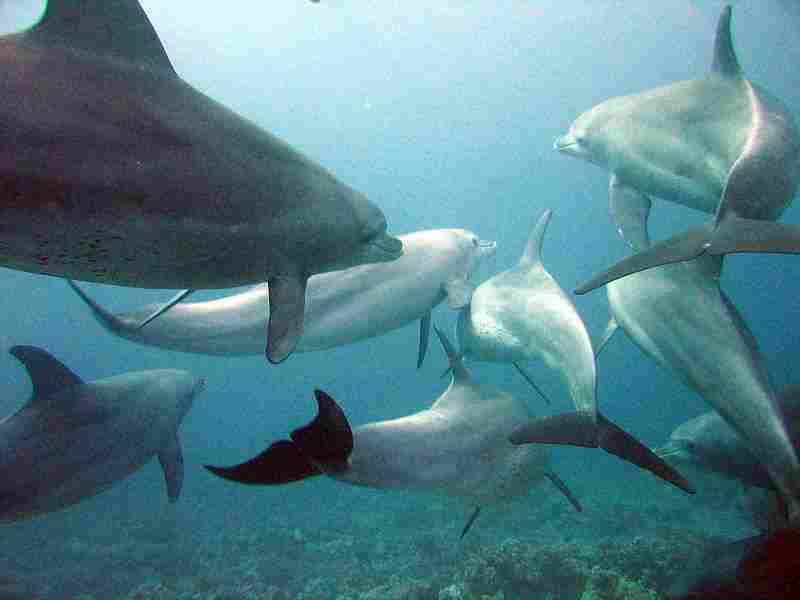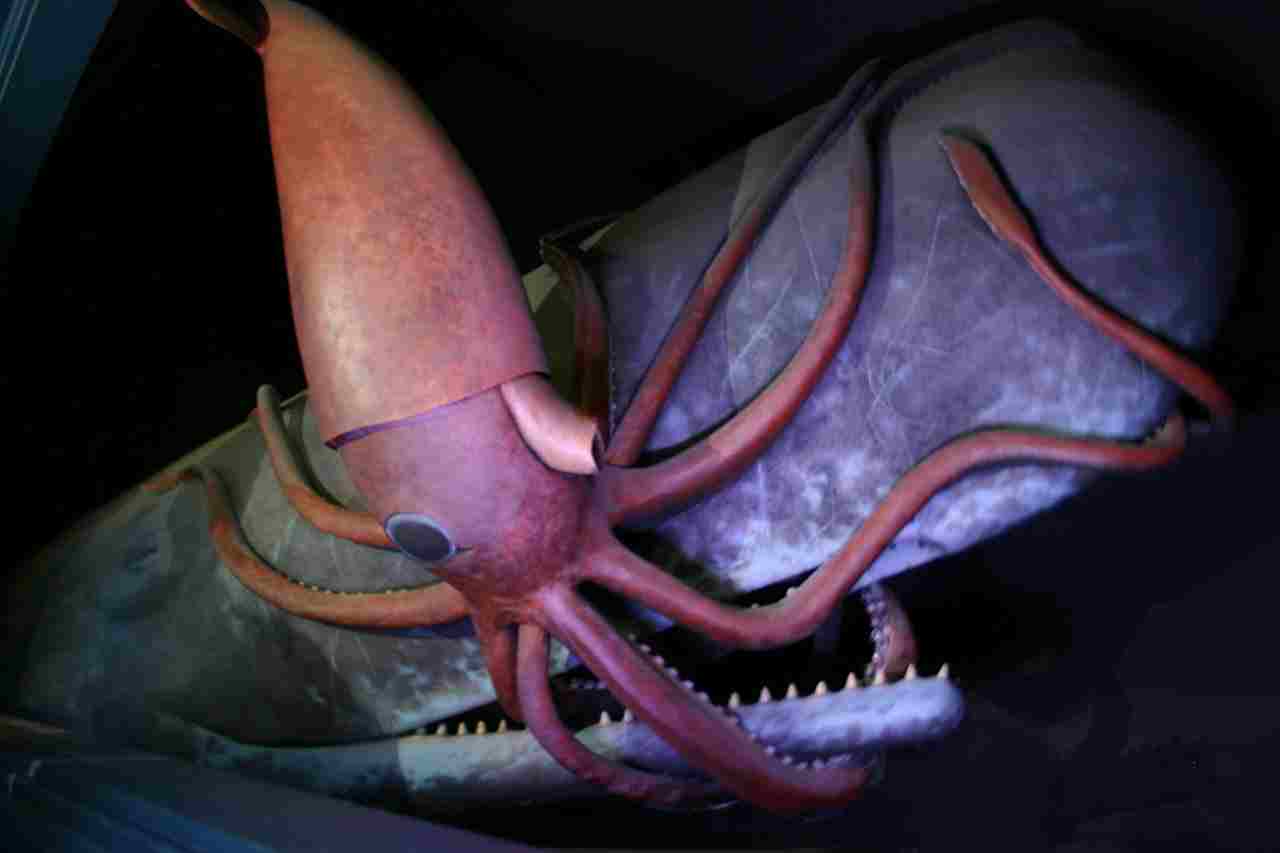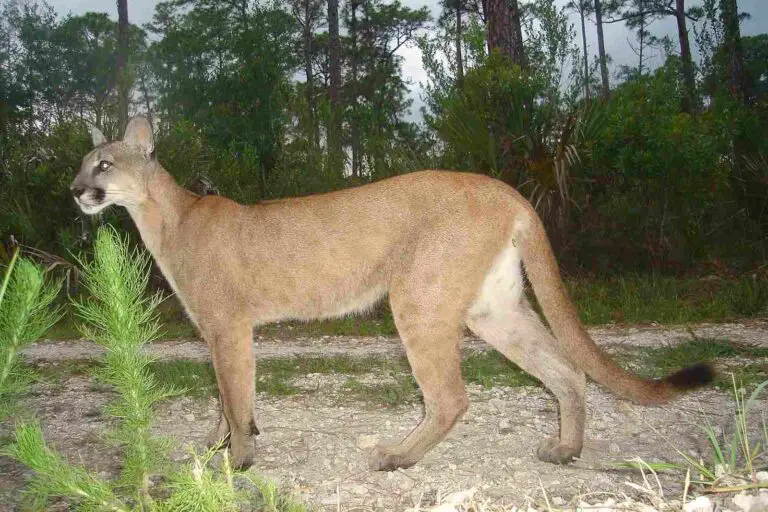Pelagic Zone Definition, Characteristics, Animals and Plants
Pelagic zone characteristics are; significant distance from coastal and benthic zones; presence of diverse specialized organisms, broad depth range, variable temperature and pressure, significant light availability, concentration of photosynthetic activity and oxygen production, as well as relative deficiency of nutrients.
Animals in the pelagic zone include microbes like bacteria and fungi, zooplankton like jellyfish, mollusks like squids, fish like the wolffish, as well as reptiles, seabirds and marine mammals.
Plants in the pelagic zone are very rare due to the absence of substrate and sufficient nutrients. However, some seagrasses and mangroves may occur under distinct conditions. Phytoplankton are the dominant primary producers in the pelagic zone.
This article discusses the pelagic zone definition, characteristics, animals and plants, as outlined below;
-Definition of Pelagic Zone
The pelagic zone can be defined based on its components, location, characteristics, and importance, as shown in this section.
1. Definition of Pelagic Zone Based on Biotic and Abiotic Components
The pelagic zone refers to the open water environment in oceans, seas, and other large bodies of water, which is geographically and ecologically separated from both the coast and the bottom substrate, and comprises of phytoplankton, zooplankton, fish, mammals, saprophytes, and various physicochemical components.
Some studies also refer to the open water segment of smaller aquatic ecosystems like rivers, streams, lakes and ponds, as the pelagic zone.
It is divided into two main subzones: the neritic zone, which is the shallow region over the continental shelf, and the oceanic zone, which extends beyond the continental shelf into deeper waters. Below is s discussion of abiotic and biotic factors in the pelagic zone;

*Abiotic Factors in the Pelagic Zone
Abiotic factors in the pelagic zone are; water, dissolved salts, light, oxygen, and physicochemical parameters like; temperature, pressure, light penetration, salinity and oxygen levels.
The pelagic zone exhibits variations in temperature with depth. Surface waters are generally warmer than deeper waters, and temperature can affect the distribution of marine organisms.
Light penetration decreases with depth, impacting photosynthesis and the availability of light for organisms. The euphotic zone, where there is sufficient light energy for photosynthesis, is limited to the upper layers.
Pressure increases with depth in the pelagic zone due to the weight of the overlying water. Organisms that inhabit deeper regions must be adapted to higher pressures.
Salinity, the concentration of dissolved salts in the water, can vary in different parts of the pelagic zone. It is influenced by factors such as precipitation, evaporation, and the mixing of ocean currents.
Oxygen concentrations can also vary with depth and location. Deeper waters tend tp have lower oxygen levels, and certain aquatic organisms have adaptations to enable them thrive better in oxygen-depleted environments, than others.
*Biotic Factors in the Pelagic Zone
Biotic factors in the pelagic zone include producers, consumers and decomposers like; phytoplankton, zooplankton, marine mammals, fish, seabirds, and saprophytic microbes; as well as their interaction such as mutualism, parasitism and predation.
Microscopic photosynthetic organisms, such as diatoms and dinoflagellates, form the trophic foundation of the pelagic marine food chain. They are abundant in the euphotic zone where light penetrates sufficiently for photosynthesis.
Small animals, including larval forms of larger organisms, that drift in the water column. They feed on phytoplankton and are, in turn, prey for many larger organisms.
The pelagic zone is home to a wide variety of fish species, including tuna, mackerel, and herring. These fish may migrate across different regions of the pelagic zone in search of food or suitable breeding locations.
Some marine mammals, such as whales and dolphins, inhabit the pelagic zone. They are adapted to life in open water and may travel great distances in search of food.
Birds like albatrosses and petrels spend a significant part of their lives in the pelagic zone, often covering vast distances in search of food.
Analyzing the biotic and abiotic components of the pelagic zone is usually important when studying marine ecosystems and the interactions between different organisms in the open ocean environment.
2. Definition of Pelagic Zone Based on Location
The pelagic zone can be defined based on location as the open water terrain in oceans and seas that is not directly associated with the seabed or the shore, and encompasses the vast expanses of water in marine environments which can be further divided into multiple subzones.
The two main subzones of the pelagic zone are; neritic and oceanic zones, differentiated on the basis of depth and light penetration. Broadly, the pelagic zone consists of five subzones which are; epipelagic zone, mesopelagic zone, bathypelagic zone, abyssopelagic zone, and hadopelagic zone respectively. Below is a discussion of the two main subzones (and their constituents).
A. Neritic Zone
This is the shallower part of the pelagic zone which extends from the coast to the edge of the continental shelf.
It includes the water above the continental shelf, which is the submerged part of the continent extending from the shore to the continental slope. The neritic zone is relatively shallow compared to the oceanic zone, and it receives more sunlight than the oceanic zone, allowing for higher rates of photosynthesis.
B. Oceanic Zone
Beyond the continental shelf lies the oceanic zone, which comprises the deep open waters of the ocean. It extends from the continental slope to the open ocean.
Characteristics of the oceanic zone include the presence of deeper and darker waters, and in some studies it is further divided into different layers based on depth, such as the epipelagic (uppermost layer), mesopelagic, bathypelagic, abyssopelagic, and hadalpelagic zones.
The pelagic zone, based on geographic positioning, includes both the neritic and oceanic zones, covering the open water expanses of oceans and seas beyond the coastal and continental shelf areas. This definition emphasizes the horizontal, elevated location of the pelagic zone in contrast to benthic zones, which are associated with the ocean floor.
3. Definition of Pelagic Zone Based on Characteristics
The pelagic zone can be defined base on its characteristics as the open water column in oceans and seas, which has physicochemical variability, significant organic life, and distinct ecological zones across its profile.
This definition focuses on the key features that distinguish the pelagic zone, including the water column, absence of bottom contact, atmospheric exposure, biotic components, and dynamic conditions.
The pelagic zone encompasses the entire water column, from the ocean surface to the ocean floor, excluding areas directly associated with the shore or the seabed. It includes both shallow and deep waters.
Unlike the benthic zone, which includes the ocean floor and its inhabitants, the pelagic zone is characterized by the absence of direct contact with the bottom. Organisms in the pelagic zone are typically free-swimming or floating.
The pelagic zone is associated with open water, and its boundaries are defined by the extent of sunlight penetration. It includes regions where sunlight is available for photosynthesis (euphotic zone) as well as deeper, darker regions where sunlight diminishes (aphotic zone).
In terms of biotic components, the pelagic zone is home to a diverse range of organisms, including phytoplankton, zooplankton, fish, marine mammals, and seabirds. These organisms are adapted to life in the open water and form complex food webs and ecological interactions.
The pelagic zone is characterized by dynamic physical and chemical conditions. Factors such as temperature, salinity, and currents can vary with depth and location, influencing the distribution and behavior of marine life.
Several species in the pelagic zone exhibit migratory behavior, moving vertically or horizontally in response to changes in environmental conditions, the availability of food, or reproductive cycles.
The pelagic zone is found in oceans and seas worldwide, and its characteristics can vary based on factors like latitude, proximity to land, and oceanography.
Characteristics of the pelagic zone are distinctive, as it encompasses the open water column of oceans and seas, excluding coastal and benthic environments. It is defined by the absence of bottom contact, the dynamic nature of its environment, and the presence of a diverse community of organisms adapted to life in the open water.
4. Definition of Pelagic Zone Based on Ecological Importance
Some reasons why the pelagic zone is important include its role as a home to diverse marine organisms, as well as in sustenance of the oceanic food web, processes of carbon sequestration; the production and cycling of oxygen, regulation of climate, recreational and scientific uses, cultural symbolism, and ecosystem services. These areas are outlined below;
The pelagic zone harbors a diverse range of marine life, including phytoplankton, zooplankton, fish, marine mammals, and seabirds, contributing significantly to global biodiversity.
It is a major segment of marine food webs, with phytoplankton serving as primary producers, supporting zooplankton, fish, and larger marine organisms. This makes it an important source of food for many species.
Phytoplankton in the pelagic zone plays a key role in carbon sequestration through photosynthesis, helping to regulate global carbon cycles and mitigate regional climate change.
Photosynthetic organisms in the pelagic zone contribute significantly to the production of oxygen, vital for the survival of marine life and influencing atmospheric oxygen levels.
The pelagic zone supports commercial fisheries, thereby serving as a significant source of food and livelihood for communities around the world.
It is instrumental in climate regulation by influencing oceanic circulation patterns and thermal energy distribution, impacting global weather patterns and climate systems.
The pelagic zone is of immense importance for scientific research and also provides opportunities for recreation, including whale watching, birdwatching, and other marine activities.
Many coastal communities have cultural and historical ties to the pelagic zone, and its health and productivity are often intertwined with cultural practices, traditions, and identities.
The pelagic zone provides essential ecosystem services, including nutrient cycling, water purification, and supporting ecoregional resilience in the face of environmental impacts and stressors.
Being widespread and interconnected, the pelagic zone facilitates global connectivity of marine ecosystems, contributing to the dispersal of species and the exchange of genetic material across oceanic regions.
-Pelagic Zone Characteristics
Pelagic zone characteristics are; geographic separation/distance from coast and bottom substrate, presence of diverse specialized organisms, broad depth range; variable temperature and pressure, significant light availability, concentration of photosynthesis an oxygen production, as well as relative deficiency of nutrients.
1). Significant Distance from Coast and Bottom Substrate: One of the Pelagic Zone Characteristics
The attribute of geographic separation or distance from the coast and bottom substrate is fundamental to the definition of the pelagic zone. This feature distinguishes the pelagic environment from benthic and coastal ecosystems.
Positional characteristics of the pelagic zone can be discussed within various contexts and under various captions, including; open water environment, absence of bottom (substrate) contact, adaptations to free movement, stratification and zonation, migration patterns, and global distribution.
The pelagic zone is characterized by its location away from the coast, encompassing the vast expanses of open water in oceans and seas. This separation from the shoreline contrasts with the nearshore environment, and emphasizes the pelagic zone's dynamic and often deeper nature.
Organisms within the pelagic zone are not in direct contact with the ocean floor or bottom substrate. This lack of physical attachment to the seabed sets the pelagic environment apart from benthic zones, where marine life is closely associated with the ocean floor.
Species inhabiting the pelagic zone have evolved to navigate the open water, exhibiting adaptations for free movement and swimming. This contrasts with benthic organisms that may be adapted to life on or within the seabed.
The significant distance from the coast contributes to the stratification of the pelagic zone into various layers, each with distinct physical and biological characteristics. This zonation includes the euphotic zone (well-lit surface waters) and the deeper aphotic zones, each hosting specific communities of marine life.
Many pelagic species exhibit migratory behavior, which entails moving horizontally or vertically across significant distances within the water column. The absence of bottom contact facilitates these dynamic movement patterns, influenced by factors such as food availability, temperature, and reproductive cycles.
Lastly, the pelagic zone's characteristic distance from the coast and bottom substrate contributes to its global distribution, making it a ubiquitous feature in oceans worldwide. This widespread nature underscores its importance in marine ecosystems and global processes.
Generally, the significant distance from the coast and absence of direct contact with the bottom substrate define the pelagic zone as an open water environment, influencing the behavior, adaptations, and ecological dynamics of the organisms that inhabit this expansive and interconnected realm.
2). Presence of Diverse Specialized Organisms
The presence of diverse specialized organisms is a key characteristic of the pelagic zone, which reflects the complexity and adaptability of life in the open water environment as a whole.
This diversity is evident across various trophic levels and includes a wide array of species with specialized adaptations for survival and ecological niches within the pelagic realm. Some of the organisms that are adapted to pelagic zones are; phytoplankton, zooplankton, pelagic fish, marine mammals, seabirds, and even some deep sea species.
The pelagic zone is home to a myriad of microscopic photosynthetic organisms collectively referred to as phytoplankton. These include diatoms, dinoflagellates, and cyanobacteria, which thrive in the light-accessible surface waters of the euphotic zone. Phytoplankton have a fundamental role to play as primary producers, harnessing solar energy to convert carbon dioxide and water into organic compounds, forming the basis of the marine food web.
Diverse zooplankton species inhabit the pelagic zone, serving as a critical link between phytoplankton and larger marine organisms. These tiny animals, including copepods, krill, and jellyfish larvae, exhibit specialized adaptations for filter-feeding or predation, contributing to the transfer of energy through the aquatic food chain.
Various fish species are adapted to life in the open water, exhibiting specialized traits for swimming and hunting. Pelagic fish such as tuna, mackerel, and sardines often have streamlined bodies and powerful tails, allowing them to cover large distances in search of prey. Some species, like the deep-sea anglerfish, have well-evolved adaptations for life in the deeper, darker zones.

The pelagic zone hosts various marine mammals, including whales, dolphins, and seals, each displaying specialized adaptations for life at sea. Whales, for example, have evolved streamlined bodies and efficient swimming techniques for long-distance migrations, while dolphins are known for their social behaviors and echolocation abilities.
Adapted to a life spent predominantly over open water, seabirds are specialized for pelagic foraging and long-distance flights. Albatrosses, petrels, and shearwaters have wingspans and wing shapes that maximize their efficiency in soaring over the ocean surface, covering vast distances in search of food.
Even in the abyssal depths of the pelagic zone, specialized organisms have adapted to extreme conditions. Deep-sea creatures, such as anglerfish, gulper eels, and giant squid, possess unique adaptations for surviving in the absence of sunlight, extreme pressure, and low temperatures.
The diversity of specialized organisms in the pelagic zone highlights the complex interplay of ecological relationships, and the evolution of traits that support life in this expansive and challenging terrain. These adaptations contribute to the resilience and ecological significance of the pelagic zone within the broader marine ecosystem.
3). Broad Depth Range: One of the Pelagic Zone Characteristics
A distinctive characteristic of the pelagic zone is its broad depth range, which encompasses a diverse array of marine environments from the ocean surface to the deep abyss. This depth variability contributes to the formation of distinct layers within the pelagic zone, each characterized by specific physical and biological conditions.
Pelagic zone depth is an important parameter in ocean exploration, and ranges from 0 to more than 6000 meters below sea level. Studying the pelagic zone depth can be simplified by delineating distinct segments like the surface water; mid-water and deep water sections. They are individually discussed below, along with their respective depth ranges;
1. Surface Waters (Epipelagic Zone)
The uppermost layer of the pelagic zone, known as the epipelagic or euphotic zone, extends from the ocean surface to a depth of about 200 meters. In this well-lit region, sunlight penetrates sufficiently for photosynthesis to occur. Phytoplankton flourish in these surface waters, serving as core primary producers of the marine food chain.
2. Mid-Water (Mesopelagic Zone)
Below the epipelagic zone lies the mesopelagic zone, which extends from depths of 200 meters to approximately 1000 meters. In this twilight zone, sunlight availability diminishes rapidly with depth, and bioluminescent organisms become more prevalent. Many species in the mesopelagic zone exhibit vertical migration, moving to the surface at night to feed and descending to deeper waters during the day to avoid predators.
3. Deep Waters (Bathypelagic, Abyssopelagic, and Hadalpelagic Zones)
Beyond the mesopelagic zone, the pelagic environment extends into the bathypelagic, abyssopelagic, and hadalpelagic zones. These deep-water regions are characterized by extreme pressure, cold temperatures, and darkness. The bathypelagic zone spans from approximately 1000 meters to 4000 meters, the abyssopelagic zone extends from 4000 meters to 6000 meters, and the hadalpelagic zone includes the ocean trenches, often reaching depths below 6000 meters.
*Pressure Variability with Depth
The pelagic zone is subject to increasing pressure with depth due to the weight of the overlying water. Organisms that inhabit deeper layers have adaptations to withstand these high-pressure conditions. For instance, deep-sea fish often possess specialized bodies that allow them to maintain buoyancy and withstand pressure changes.
The pelagic zone depth range exhibits global variability, being influenced by factors such as ocean currents, geography, and proximity to continental shelves. In some areas, the continental slope may be steep, leading to a rapid transition from shallow to deep waters, while in others, the slope may be more gradual.
An evaluation of the broad depth range of the pelagic zone is crucial for studying the distribution of marine life, the vertical migration patterns of organisms, and the physical and chemical characteristics of different layers within this expansive and interconnected segment of the open ocean.
4). Variable Temperature and Pressure
The pelagic zone exhibits variable temperature and pressure as defining characteristics, which reflect the dynamic nature of the open water environment in oceans and seas.
These variations are influenced by factors such as depth, latitude, and ocean currents, contributing to the distinct physical and biological conditions within different layers of the pelagic zone.
Pelagic zone temperature is an important parameter, which can be discussed under various captions, and has multiple implications for this ecozone.
Captions that can be used in the discussion of pelagic zone temperature are; surface conditions, thermocline, and temperature stratification.
In the upper layers of the pelagic zone, particularly in the epipelagic or euphotic zone, surface temperatures are influenced by sunlight and can vary with geographical location and seasonal changes. These surface waters generally experience more significant temperature fluctuations compared to deeper layers.
As depth increases, the pelagic zone often features a thermocline, a region characterized by a rapid decrease in temperature with depth. The thermocline can act as a barrier, limiting the mixing of surface and deeper waters. The depth and strength of the thermocline can vary, impacting the distribution of marine life within the water column.

The stratification of the pelagic zone into distinct layers is also a function of varying temperatures. In the epipelagic zone, temperatures are relatively uniform due to sunlight-driven warming. In contrast, the mesopelagic, bathypelagic, and abyssopelagic zones experience decreasing temperatures with increasing depth. The hadalpelagic zone, found in ocean trenches, may exhibit near-freezing temperatures.
Other concepts that are relevant to this discussion include; deep-sea temperature and pressure, ocean currents, and vertical migration.
In the deeper layers of the pelagic zone, temperatures decrease significantly, reaching near-freezing levels in the abyssopelagic and hadalpelagic zones. Simultaneously, pressure increases with depth due to the weight of the overlying water. Organisms in these deeper zones have evolved to withstand extreme conditions, including cold temperatures and high pressure.
Ocean currents play a crucial role in redistributing heat within the pelagic zone, influencing temperature patterns on both local and global scales. Warm currents can raise temperatures in certain regions, while cold currents can have a cooling effect.
The variable temperature and pressure conditions in the pelagic zone contribute to the phenomenon of vertical migration. Many organisms, such as zooplankton and certain fish, move between different layers of the water column to optimize their exposure to suitable temperatures, access food resources, and avoid predators.
Variability of temperature and pressure in the pelagic zone must be understood for a thorough assessment of the distribution, behavior, and adaptation of marine organisms in this dynamic and interconnected open water environment. The complex interplay of these factors defines the ecological dynamics and biodiversity within the pelagic terrain.
5). Significant Light Availability: One of the Pelagic Zone Characteristics
Significant light availability is a crucial characteristic of the pelagic zone, especially in the upper layers, and it has a fundamental role to play in defining the ecology and dynamics of this open water environment.
Because of the spatial/vertical variability of light penetration in the pelagic zone, the attribute of abundant light is most pronounced in the euphotic zone, which is the uppermost and most-exposed layer.
Factors and concepts that can be used to describe lighting conditions in the pelagic zone include, photosynthetic activity, primary production, light intensity variation, biological zonation, vertical migration, and the sustainability of coral reefs. These are discussed below;
The uppermost layer of the pelagic zone, known as the euphotic zone or epipelagic zone, is characterized by significant light availability. In this zone, sunlight penetrates the water column, allowing for photosynthesis to occur. This is a critical factor for the growth of phytoplankton, which serve as the primary producers and form the base of the marine food web.
Availability of light in the euphotic zone supports the photosynthetic activity of phytoplankton, including diatoms, dinoflagellates, and cyanobacteria. These microscopic organisms convert solar energy into organic compounds, producing oxygen and forming the trophic foundation of the pelagic food chain.
The euphotic zone is responsible for a significant portion of the ocean's primary production. Phytoplankton abundance and growth contribute to the availability of organic matter, sustaining zooplankton, fish, and other marine organisms throughout the pelagic ecosystem.
Light availability in the pelagic zone varies with factors such as depth, geographical location, and seasonal changes. In deeper layers, light intensity decreases, and the euphotic zone is limited to the upper layers where sunlight can penetrate sufficiently for photosynthesis.
The distribution of marine organisms within the pelagic zone is often influenced by light availability. For example, phytoplankton and other photosynthetic organisms are concentrated in the well-lit upper layers, while deeper layers may host organisms adapted to low light conditions or bioluminescent species.
Several pelagic organisms exhibit vertical migration, moving between different layers of the water column in response to light availability and other environmental factors. This behavior allows organisms to optimize feeding, avoid predators, and take advantage of favorable conditions in the euphotic zone.
While not typically associated with the open ocean pelagic zone, shallow-water coral reefs also depend on significant light availability for the photosynthetic activity of symbiotic zooxanthellae within coral tissues. These ecosystems thrive in well-lit, clear waters.
The significance of light availability in the pelagic zone is a concept that is essential for understanding the distribution, productivity, and ecological interactions of marine life in this dynamic open water environment. It also underscores the importance of maintaining water clarity and quality for the health of pelagic ecosystems.
6). Concentration of Photosynthesis and Oxygen Production
The concentration of photosynthetic activity and oxygen production is a known characteristic of the pelagic zone, particularly in the upper layers where sunlight penetrates and supports the growth of photosynthetic organisms. This process has profound implications for the structure and function of marine ecosystems.
Some topics that can be discussed within the context of pelagic photosynthesis and oxygen production are; phytoplankton abundance, photosynthetic activity, oxygen production, primary production, seasonal variation, carbon sequestration, and impact on global climate.
The pelagic zone, especially in the euphotic or epipelagic zone near the ocean surface, is characterized by a concentration of phytoplankton. These microscopic, photosynthetic organisms include diatoms, dinoflagellates, and cyanobacteria. Their abundance is driven by the availability of sunlight for photosynthesis.
Phytoplankton in the pelagic zone utilize sunlight to convert carbon dioxide and nutrients into organic compounds through photosynthesis. This process is a primary source of energy for the pelagic ecosystem, contributing to the production of complex organic matter.
As a byproduct of photosynthesis, phytoplankton release oxygen into the water. The pelagic zone, especially in the euphotic zone, serves as a significant contributor to global oxygen production. This oxygen is vital for the survival of marine organisms and is also central to maintaining aerobic conditions in the ocean.
The concentration of photosynthetic activity in the pelagic zone results in high rates of primary production. Phytoplankton form the foundational level of the marine food web, by providing a food source for zooplankton and various other organisms. The energy derived from photosynthesis therefore sustains the entire pelagic ecosystem.
The concentration of photosynthesis and oxygen production can exhibit seasonal variations based on factors such as sunlight availability, temperature, and nutrient availability. In some regions, this seasonality is pronounced, influencing the timing and magnitude of biological processes in the pelagic zone.
Phytoplankton have a crucial role to play in carbon sequestration. Through photosynthesis, they incorporate carbon dioxide into organic matter, which can then be transported to deeper layers of the ocean through processes such as sinking particles. This contributes to the regulation of local atmospheric carbon dioxide levels and the global carbon cycle.
The concentration of photosynthesis and oxygen production in the pelagic zone has broader implications for the regulation of global climate. The ocean, through its role in carbon sequestration and oxygen production, influences atmospheric composition and temperature.
Generally, photosynthesis and oxygen production in the pelagic zone are fundamental processes that sustain marine ecosystem dynamics, nutrient cycling, and the overall vitality of the world's oceans. Their importance exemplifies the interconnectedness of biological and physical processes that shape the functionality of the pelagic environment.
7). Relative Deficiency of Nutrients: One of the Pelagic Zone Characteristics
The relative deficiency of nutrients is another notable characteristic of the pelagic zone, particularly in surface waters. This nutrient limitation influences the growth and productivity of organisms in this open water environment.
To understand this attribute, some concepts that can be analyzed include; oligotrophic conditions, phytoplankton growth limitation, nutrient cycling, biological productivity gradients, seasonal and regional variability, impact on food webs, as well as nutrient limitation experiments.
The pelagic zone, especially in the euphotic or epipelagic zone, often exhibits oligotrophic conditions. Oligotrophic waters are characterized by a relative deficiency of nutrients, such as nitrogen, phosphorus, and iron. This nutrient limitation can be a defining feature of vast areas in the open ocean.
Nutrient deficiency in surface waters limits the growth of phytoplankton, the primary producers in the pelagic zone. While sunlight is abundant, the availability of essential nutrients becomes a controlling factor in the rate of photosynthesis and overall primary production.
Nutrient cycling in the pelagic zone is influenced by various factors, including ocean currents, upwelling events, and the deposition of organic matter. Upwelling, in particular, can bring nutrient-rich waters from deeper layers to the surface, temporarily alleviating nutrient limitations and promoting increased productivity.
Availability of nutrients varies geographically, creating biological productivity gradients in the pelagic zone. Coastal areas, influenced by nutrient runoff from land, may exhibit higher nutrient concentrations and increased biological productivity compared to the nutrient-poor open ocean regions.
Nutrient levels in the pelagic zone can exhibit seasonal and regional variability. Some regions experience seasonal upwelling events that bring nutrient-rich waters to the surface, enhancing productivity. In contrast, other areas may remain consistently oligotrophic.
The relative deficiency of nutrients in surface waters influences the structure and dynamics of pelagic food webs. The availability of nutrients affects the abundance and composition of phytoplankton, which, in turn, impacts zooplankton and higher trophic levels.
Scientists often conduct nutrient limitation experiments to study the effects of nutrient availability on phytoplankton growth. These experiments involve adding specific nutrients to surface waters to observe how the addition influences phytoplankton productivity.
Iron is a crucial micronutrient that can be a limiting factor for phytoplankton growth in certain regions of the pelagic zone. Iron fertilization experiments have been conducted to explore the potential for enhancing carbon sequestration through increased phytoplankton activity.
The relative deficiency of nutrients in the pelagic zone has a significant influence over the factors that regulate biological productivity, energy flow, and nutrient cycling in this expansive and interconnected open water environment. It also underscores the delicate balance between physical and biological processes that shape the ecology of the pelagic zone.
-Animals in the Pelagic Zone
Animals in the pelagic zone include; microbes like bacteria, zooplankton like krill, mollusks like octopuses, fish like bluefish tuna, reptiles like sea turtles, seabirds like petrels, and marine mammals like ringed seals.
1). Microbes: A Class of Animals in the Pelagic Zone
Microbes, including bacteria and fungi, play important roles in the pelagic zone ecosystem despite being microscopic. This section briefly highlights characteristics of these microbes in the pelagic zone.
1. Bacteria
Attributes of bacteria in the pelagic zone include their abundance, adaptability, and role in the recycling of nutrients.
Bacteria are highly abundant in the pelagic zone, contributing significantly to microbial biomass.
They play a vital role in nutrient cycling, breaking down organic matter and recycling nutrients through processes like decomposition and nitrogen fixation.
Lastly, bacteria in the pelagic zone exhibit adaptability to changing environmental conditions, contributing to their ubiquity and ecological importance.
2. Fungi
Some factors that can be included in any discussion of fungi in the pelagic zone include their (relatively) limited presence, potential importance, and role in biodegradation.
Fungi are less abundant in the pelagic zone compared to bacteria, as they are more commonly associated with terrestrial environments and decomposing organic matter.
Fungal spores and mycelial fragments may be present in marine snow, which is organic detritus sinking from surface waters to the deeper pelagic zones.
Some fungi contribute to the decomposition of organic matter, playing a role in nutrient cycling in the pelagic ecosystem.
While bacteria are ubiquitous and actively participate in nutrient cycling processes, fungi in the pelagic zone are relatively less prominent but still contribute to the microbial dynamics, especially in association with sinking organic particles. Both microbial groups are essential for maintaining the health and functioning of the pelagic ecosystem.
2). Zooplankton in the Pelagic Zone
Zooplankton, including organisms like krill and jellyfish, are vital components of the pelagic zone ecosystem. This section outlines basic characteristics of these pelagic animals individually.
1. Krill
Important attributes of krill in the pelagic zone include their size, abundance; feeding behavior, and migration.
Krill are small, shrimp-like crustaceans that often form large swarms. They are a key component of pelagic ecosystems and serve as a primary food source for many marine species.
Krill are filter feeders, consuming phytoplankton and other small particles by using specialized appendages to filter them from the water.
Some krill species undertake vertical migrations, moving between deeper and surface waters, possibly to optimize feeding and avoid predators.

2. Jellyfish
The features of jellyfish range from their gelatinous structure to their specialized feeding mechanisms and complex life cycle.
Jellyfish are gelatinous, umbrella-shaped animals with tentacles that may contain specialized cells for capturing prey.
They use their tentacles to capture small planktonic organisms or even small fish. Some jellyfish are opportunistic predators, while others primarily feed on plankton.
Jellyfish have a complex life cycle, including a medusa stage (the familiar jellyfish form) and a polyp stage. This life cycle influences their distribution and interactions in the pelagic zone.
Both krill and jellyfish play effective roles in the pelagic food web. Krill, as primary consumers, transfer energy from phytoplankton to higher trophic levels, supporting the diet of many marine species. Jellyfish, as both predators and prey, contribute to the overall equilibrium and dynamics of the pelagic ecosystem.
3). Macroscopic Mollusks: A Class of Animals in the Pelagic Zone
Macroscopic mollusks, including pelagic snails, squids, and octopuses, exhibit distinct characteristics in the pelagic zone. Some of these are discussed as follows;
1. Pelagic Snails (Pteropods)
Some attributional factors related to pelagic snails include their floating forms, shell variability, and role as a food source.
Pteropods are free-swimming gastropod mollusks with wing-like structures that allow them to move through the water.
Some pteropods have shells, while others are shell-less, and their transparent or gelatinous bodies make them well-adapted to pelagic life.
Pteropods are important in the pelagic food web, serving as prey for various marine animals, including larger mollusks and fish.
2. Squids
Characteristics of squids in the pelagic environment include their role as active swimmers, possession of tentacles and beaks, and behavioral complexity.
Squids are highly mobile cephalopods known for their efficient propulsive motion, which enables rapid and agile movement in the water.
They have tentacles equipped with suckers and a powerful beak, which they use for hunting and capturing prey, such as fish and other squid.
Squids are also known for their complex behaviors, including communication through changing skin color and pattern, and some species are capable of bioluminescence.
3. Octopuses
In the pelagic zone, octopuses are distinguished by their flexible bodies; camouflage, and adaptability among other features.
Octopuses are characterized by their soft bodies, well-developed intelligence, and remarkable flexibility. They lack an external shell, allowing them to squeeze through tight spaces.
Also, octopuses are masters of camouflage, changing color and texture to blend with their surroundings. This adaptation serves both as a defense mechanism and for hunting prey.
Some octopus species demonstrate problem-solving abilities, making them highly adaptable predators in the pelagic environment.
These macroscopic mollusks contribute to the biodiversity and ecological dynamics of the pelagic zone. They have essential functions as both predators and prey, participating in marine food webs and exhibiting unique adaptations for life in open ocean waters.
4). Fish in the Pelagic Zone
Fish species in the pelagic zone include sharks, swordfish, wolffish, and bluefin tuna. They exhibit distinct characteristics, some of which are highlighted in this section;
1. Sharks
Prominent features of sharks in the pelagic zone include their cartilaginous skeleton, apex predatory role, and migratory behavior.
Sharks have a cartilaginous skeleton, which makes them lighter and more buoyant than bony fish. This adaptation aids in their pelagic lifestyle.
Many shark species are apex predators, occupying the top of the pelagic food chain. They have a crucial role to play in maintaining the stability of marine ecosystems and preventing prey overpopulation.
Some sharks undertake extensive migrations, covering vast distances across ocean basins in search of prey or suitable breeding grounds.
2. Swordfish
Characteristics of swordfish in the pelagic zone include the possession of a distinct bill, high speed, and warming organs.
Swordfish are named for their long, sword-like bills. This adaptation is used for slashing through schools of fish and squid, making them efficient predators.
Also, swordfish are powerful swimmers, capable of reaching high speeds. This allows them to pursue prey in the open ocean.
Swordfish possess specialized organs near their eyes that heat their brains and eyes, allowing them to operate efficiently in colder, deep waters.
3. Wolffish
Wolffish species are known to exhibit both pelagic and benthic preferences, as well as adaptive tolerance of cold conditions, and a unique appearance.
While some wolffish are associated with the benthic zone, others, like the oceanic wolffish, inhabit the pelagic zone.
Wolffish are well-adapted to cold environments, possessing antifreeze proteins in their blood to prevent ice crystal formation.
Also, wolffish have a distinctive appearance with large heads and powerful jaws, allowing them to feed on prey like fish and invertebrates.
4. Bluefin Tuna
In the pelagic zone, bluefin tuna can be distinguished by their high migration rate/tendency, endothermic adaptation, as well as commercial importance.
Bluefin tuna are known for their extensive migrations, covering thousands of kilometers across ocean basins. They can maintain warm body temperatures, enabling them to traverse a wide range of water temperatures.
Typically, bluefin tuna are endothermic, and capable of regulating their body temperature above that of the surrounding water. This adaptation enhances their swimming performance and extends their range.
Bluefin tuna are highly valued in the fishing industry, leading to conservation concerns due to overfishing.
Collectively, pelagic fish species contribute to the organic diversity and ecological dynamics of the open ocean, playing pivotal roles in marine food webs and ecosystems.
5). Reptiles: A Class of Animals in the Pelagic Zone
Sea turtles are notable reptiles that inhabit the pelagic zone, especially coastal and open ocean waters. Their key characteristics include adaptation(s) to aquatic life, wide geographic range, distinctive life cycle, nesting habits, diet and foraging behavior.
Sea turtles have streamlined bodies and forelimbs that are modified into paddle-like flippers, allowing them to navigate efficiently through water.
As air-breathing reptiles, sea turtles must come to the water's surface to breathe. They have specialized adaptations, including large lungs and the ability to hold their breath for extended periods.
Sea turtles are found in various oceanic regions and undertake extensive migrations. They travel long distances between nesting and feeding grounds, contributing to the distribution of nutrients and playing a role in the dynamics of marine populations.
Female sea turtles typically return to specific beaches to lay their eggs in nests. The hatching of eggs and subsequent journey of hatchlings to the sea are critical stages in the sea turtle life cycle.
Sea turtles feed heavily on jellyfish, but their diet may also include crustaceans, mollusks, and seagrasses. They have an effective role to play in controlling jellyfish populations and maintaining the balance of marine ecosystems.
Generally, sea turtles face numerous threats, including environmental degradation, anthropogenic habitat modification, ocean pollution, and accidental entanglement in fishing gear. Conservation efforts are essential to protect these reptiles, many of which are classified as endangered or vulnerable.
Sea turtles contribute to the biodiversity of the pelagic zone and coastal ecosystems. Their interactions with other marine species, along with their migratory behaviors, make them important components of the intricate web of life in the open ocean.
6). Seabirds in the Pelagic Zone
Seabirds in the pelagic zone include species like petrels and gannets, which are are well-adapted to life in this habitat. Their key characteristics include; aerial adaptations, distinctive feeding strategies, nesting habits, possession of salt glands, long-distance migration, unique morphological features, and multiple ecological roles.
Seabirds have powerful wings, which enable them to cover vast distances over open ocean. Many species are skilled flyers, capable of dynamic soaring and long-distance migrations.
Petrels are known for their ability to feed on the ocean's surface, often skimming over waves to catch prey. Gannets, on the other hand, employ plunge-diving techniques, diving from the air to catch fish beneath the surface.
Seabirds often breed and nest in colonies on remote islands, cliffs, or rocky outcrops. They may travel significant distances to find suitable nesting sites and food for their chicks.
Seabirds typically possess a specialized salt gland that allows them to excrete excess salt accumulated from their marine diet. This adaptation is crucial for maintaining proper osmotic balance.
Many seabird species undertake long-distance migrations, traveling thousands of kilometers between breeding and feeding grounds. This migration is often synchronized with seasonal changes and the availability of food.
Petrels may have tubular nostrils, helping to reduce drag during flight. Gannets have distinctive plumage patterns and are known for their striking plunge-diving behavior.

Seabirds play an important ecological role by transferring nutrients between marine and terrestrial ecosystems. Their guano (bird droppings) is rich in nutrients and contributes to the fertility of island soils.
Seabirds are important indicators of marine ecosystem health and are sensitive to changes in ocean conditions. Their behaviors, adaptations, and movements make them fascinating components of the pelagic zone ecosystem.
7). Marine Mammals: A Class of Animals in the Pelagic Zone
Marine mammals in the pelagic zone include species like elephant seals, ringed seals, and beaked whales, which have evolved to thrive in this environment.
Important characteristics of these pelagic animals are discussed as follows;
1. Elephant Seals
Factors used to distinguish elephant seals include their relatively large size, and diving abilities.
Elephant seals are among the largest seals, with males reaching impressive sizes. They are known for their distinctive, trunk-like proboscis that males develop during the breeding season.
Also, elephant seals are exceptional divers, capable of reaching great depths during their foraging dives. They can stay submerged for extended periods, often exceeding an hour.
2. Ringed Seals
Arctic adaptations and prey selection can both be attributed to ringed seals.
Ringed seals are well-adapted to Arctic environments and are the smallest and most numerous seals in this region. They maintain breathing holes in sea ice, creating and maintaining these openings with their sharp claws.
Ringed seals mainly feed on small fish and invertebrates, and they are important prey for polar bears and other predators.
3. Beaked Whales
As cetaceans, beaked whales are deep divers characterized by an elusive behavior that often hinders study efforts.
Beaked whales are known for their remarkable deep-diving abilities. Some species can reach depths of over 3,000 meters during their foraging dives, making them among the deepest-diving marine mammals.
Behaviorally, beaked whales are often elusive and challenging to study due to their deep-sea habits. They are known for their extended periods spent at depth and limited time spent at the surface.
The marine mammals discussed in this section, contribute to the pelagic zone's biodiversity and play essential roles in marine ecosystems. Their adaptations, behaviors, and ecological interactions provide valuable insights into the complex dynamics of life in open ocean waters.
-Plants in the Pelagic Zone
Plants in the pelagic zone include marine macrophytes like some seagrasses. These plants rarely occur due to the absence of substrate for anchorage, but their presence within this environment is possible under some conditions, especially given the abundance of sunlight in the upper pelagic zone.
Macroalgae like seaweeds (brown algae, red algae) are also not typically found in the pelagic zone due to the absence of substrate for attachment.
Some studies cite phytoplankton as plants in the pelagic zone. While phytoplankton are not plants, they are indeed the most dominant and well-known primary producers in the pelagic zone. Some examples of pelagic phytoplankton, including diatoms, dinoflagellates and cyanobacteria, are discussed below;
Phytoplankton in the Pelagic Zone
Phytoplankton are microscopic, photosynthetic organisms that serve as primary producers in the pelagic zone.
They can be characterized on the basis of their size and composition, photosynthetic function, abundance and spatial distribution.
Phytoplankton encompass a diverse group of microorganisms, including diatoms, dinoflagellates, cyanobacteria, and other single-celled algae.
They are typically small, ranging from a few micrometers to a few hundred micrometers in size.
Phytoplankton harness sunlight to perform photosynthesis, converting carbon dioxide and nutrients into organic compounds.
They play an important role in oxygen production and carbon cycling, influencing global climate patterns.
Phytoplankton are abundant in the surface waters of oceans, seas, and other large water bodies, forming the base of the marine food web.
Their distribution is influenced by factors such as nutrient availability, sunlight, and water temperature.
1. Diatoms
Diatoms are a major group of phytoplankton with intricate silica shells. They are effective contributors to marine productivity and are often found in waters with sufficient nutrients to support their biological processes.
2. Dinoflagellates
Dinoflagellates are characterized by their flagella, allowing them to move through the water. They are important contributors to bioluminescence in the ocean.
3. Cyanobacteria
Cyanobacteria, also known as blue-green algae, are photosynthetic bacteria that have a significant role to play in nitrogen fixation, and contribute to ecological primary production.
*Additional Notes On Phytoplankton in the Pelagic Zone
In the pelagic zone, phytoplankton can be analyzed in terms of their role(s) in the food web, and production of seasonal blooms.
Phytoplankton occupy the foundation of the marine food web, providing chemical energy for zooplankton, small fish, and other organisms in higher trophic levels.
Phytoplankton populations can undergo seasonal blooms, exhibiting rapid increases in abundance due to favorable environmental conditions.
The characteristics of phytoplankton represent an important factor that must be included in any comprehensive study of marine ecosystems and the dynamics of the pelagic zone. Their role as autotrophic organisms determines the availability of energy and nutrients for the diverse life forms that inhabit open ocean waters.
Conclusion
Pelagic zone characteristics are;
Significant Distance from Coast and Bottom Substrate
Presence of Diverse Specialized Organisms
Broad Depth Range
Variable Temperature and Pressure
Significant Light Availability
Concentration of Photosynthesis and Oxygen Production
Relative Deficiency of Nutrients
Animals in the pelagic zone are;
Microbes like bacteria and fungi
Zooplankton like krill and jellyfish
Macroscopic Mollusks like pelagic snails, squids and octopuses
Fish like sharks, swordfish, wolffish and bluefin tuna
Reptiles like sea turtles
Seabirds like petrels and gannets
Marine mammals like elephant seals, ringed seals, and beaked whales
Plants in the pelagic zone are;
Seagrasses like Halodule uninervis and Halophila stipulacea
Mangroves
Other pelagic autotrophs include;
Dinoflagellates
Cyanobacteria
Diatoms
